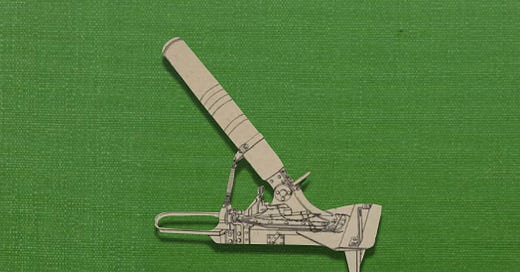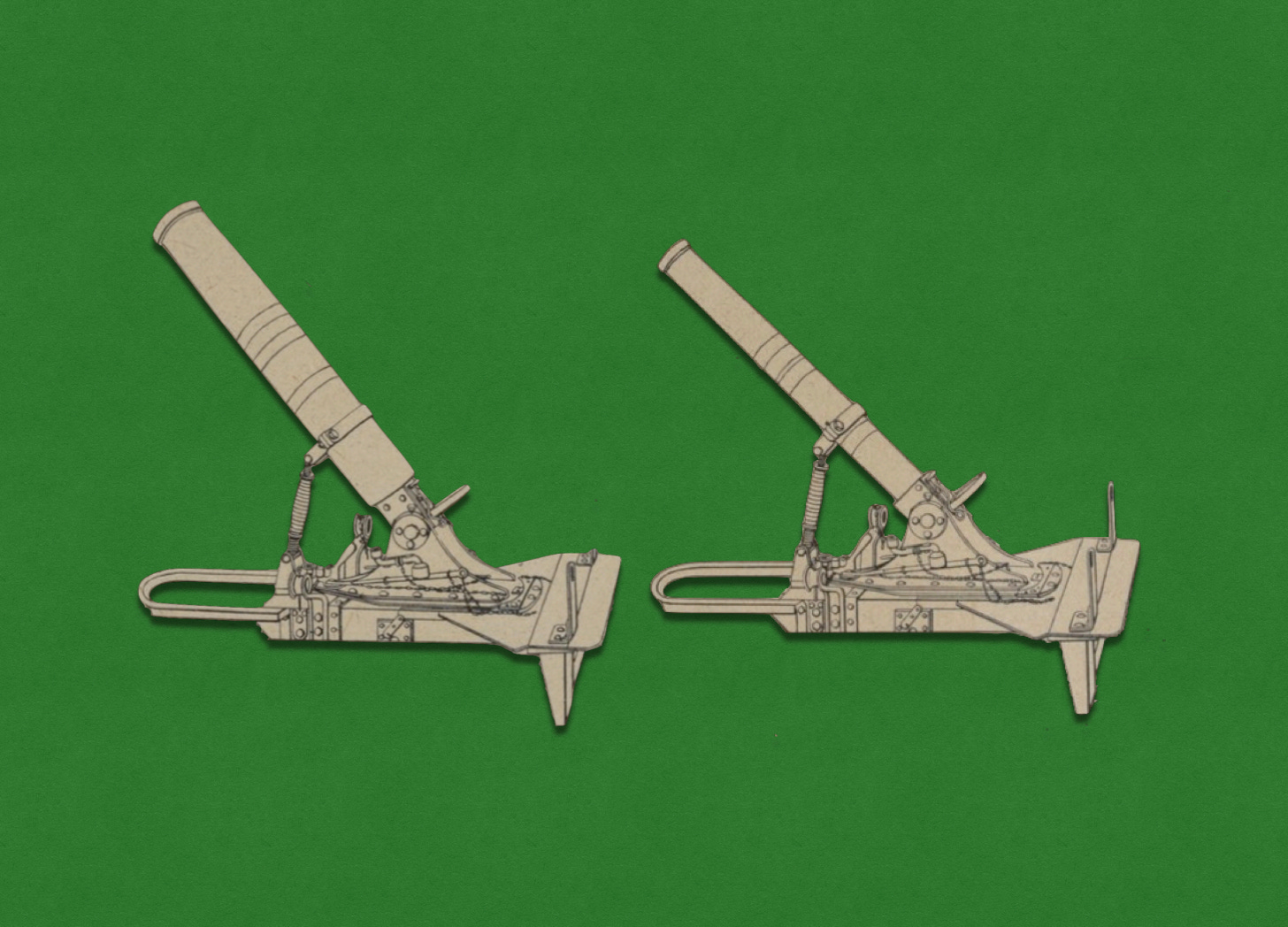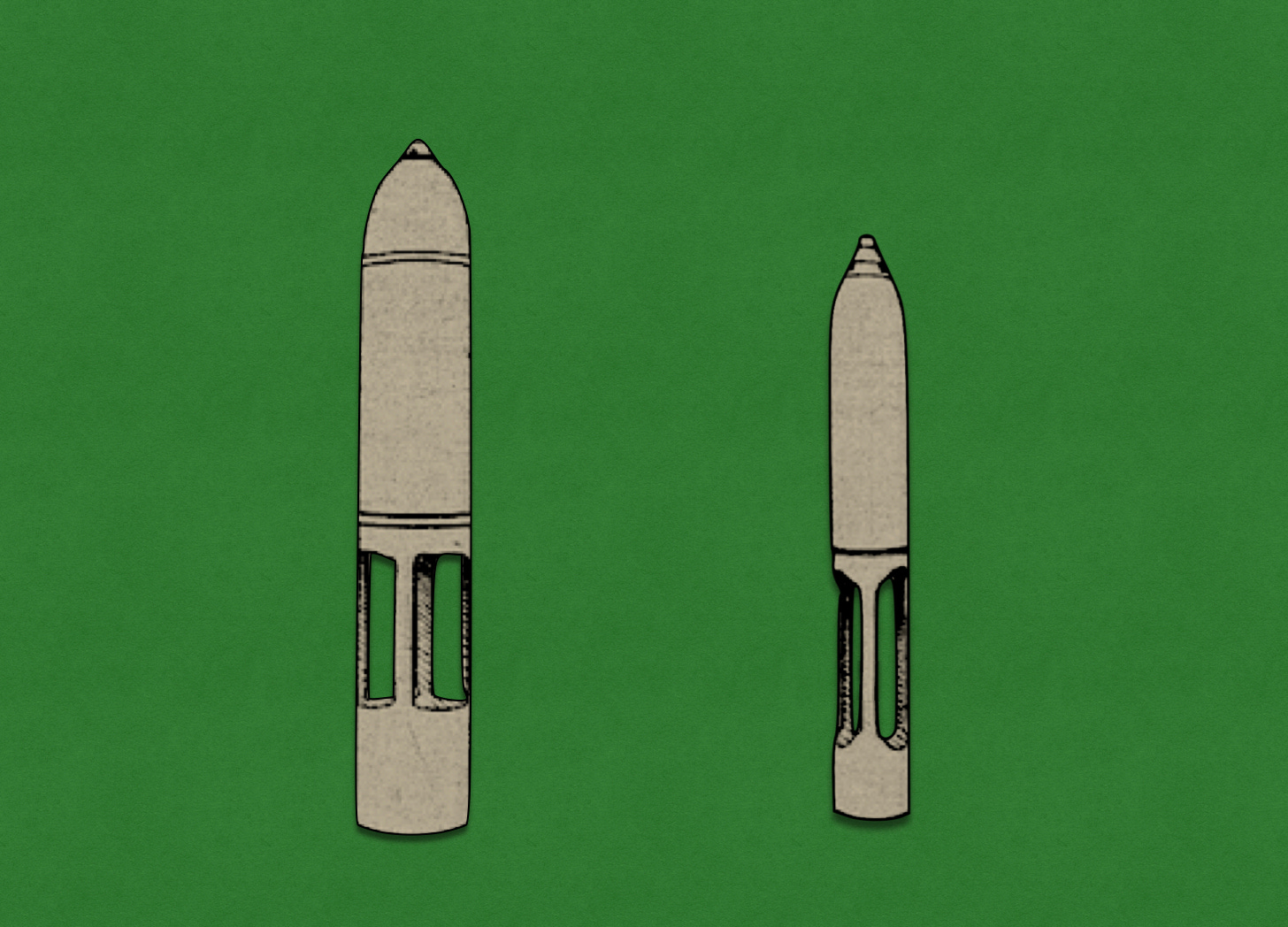In most instances, the inventors of French trench mortars did not display their talent for repurposing existing components until after the start of the war. In the case of François Eugène Jouhandeau, however, this ability had been evident for more than a quarter century.
Born in 1852, in a rural corner of Aquitaine, Monsieur Jouhandeau completed his formal schooling at the famous École Polytechnique in Paris. Commissioned in the artillery, he divided his time between service with artillery units and work at the arsenals where weapons were designed and made.
In June of 1889, while serving with the 14th Artillery Regiment, Jouhandeau designed a device for quickly aligning all six of the guns of a defiladed battery with their targets. While the device, which made use of mirrors, proved less than “soldier-proof,” it brought its inventor to the attention of the committee charged with testing new equipment for the artillery.
Later that year, Jouhandeau produced a set of drawings for a new machine gun. This weapon used a modified version of the barrel of the standard service rifle of the day. Better yet, it allowed the operator to interrupt the cycle of loading and firing, thereby preventing the gun from “running away.”
Between 1898 and 1901, Jouhandeau devoted a lot of time to the design of a mounting for a 240mm coast artillery gun. This apparatus made use of a portion of the recoil energy generated by firing one projectile to load the next, thereby increasing, by a factor of four, the rate of fire of the piece.
During the first decade of the twentieth century, Jouhandeau continued to work on projects related to the 240mm gun. At the same time, he devoted time to carriages for smaller pieces, to include both 75mm guns of various types and small-caliber “pom-pom” guns.
Sad to say, few of the fruits of Jouhandeau’s drawing board were transformed into prototypes, let alone accepted into service. The great exception to this rule, the mounting for the 240mm coast artillery gun, which was adopted in 1901, soon found itself eclipsed by a mounting developed by a private arms maker.
In 1912, after 41 years of service, Jouhandeau retired. Two years later, upon the outbreak of the war against Germany, he became an advisor to the Service d’Inventions d’Artillerie. While in that post, he collaborated with the astrophysicist Henri Deslandres, then serving as an engineer officer, on the design of a trench mortar.
The resulting mortar, which was adopted by the French Army in December of 1915, was provided with both a 75mm barrel and a 120mm tube. Better yet, the ease with which these barrels could be swapped allowed a unit equipped with the weapon to tailor its arsenal to particular circumstances.
Like so many French mortars of its day, the Jouhandeau-Deslandres could fire shells of types originally designed for use with 75mm field guns and 120mm siege-and-fortress guns. The bodies of such shells, however, were far thicker than they had to be to accommodate the relatively modest stress of being fired from a mortar. Thus, the mortar was eventually provided with bombs made out of sheet metal. (In addition to being lighter, these thin-walled projectiles could also carry a larger payload.)
Whether repurposed artillery shells or purpose-built bombs, all projectiles fired by the “JD” mortar were fitted with stabilizers. Made out of sheet metal, these perforated tail pieces performed the same service as the wings fitted to trench mortar projectiles of other sorts. That is, they prevented the projectiles from tumbling as it flew through the air.
Sources: Biographical information for both Colonel Jouhandeau and Major Deslandres comes from Léonore, the database of the Legion of Honor. Additional information about Colonel Jouhandeau comes from an obituary. “Necrologie: M. le Colonel Jouhandeau” Revue d’Artillerie (September 1921) pages 297-299
Information about the inventions of Colonel Jouhandeau comes from Jules Challéat L'artillerie de terre en France pendant un siècle : histoire technique (1816-1919), Tome II [Land Artillery in France over the course of a Century: Technical History (1816-1919), Volume II] (Paris: Charles-Lavauzelle, 1935), pages 145, 157, 290, 402, 407 and 433.
For Further Reading:
To Support, Subscribe, or Share:









The Inexperienced and Misinformed presently mock the Russians purported repurposing of T-55s for Ukraine.
Meanwhile Experience drives by the M60 Patton Tank outside the American Legion wondering how much work to get it running…
… same with static display 57mm AA guns…